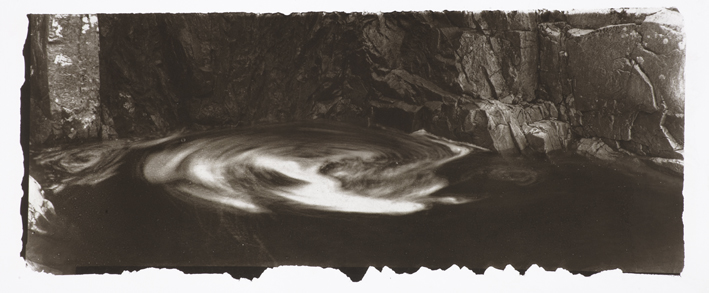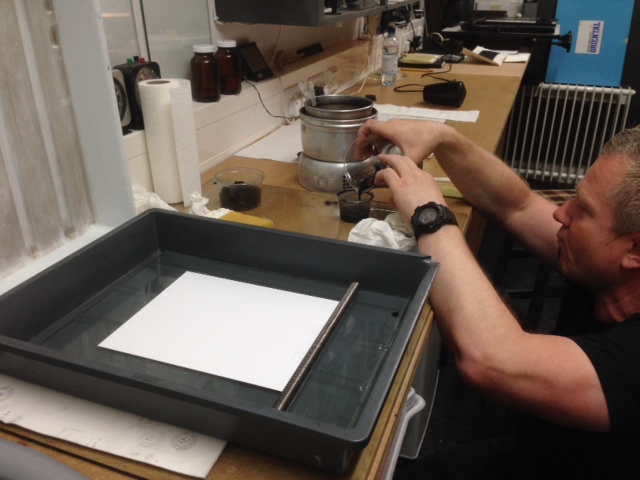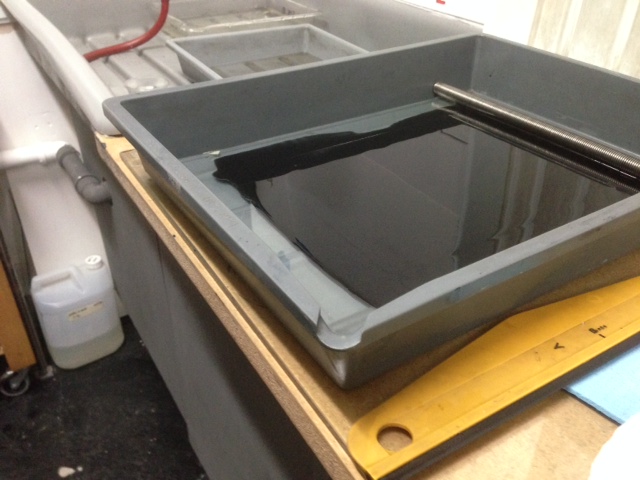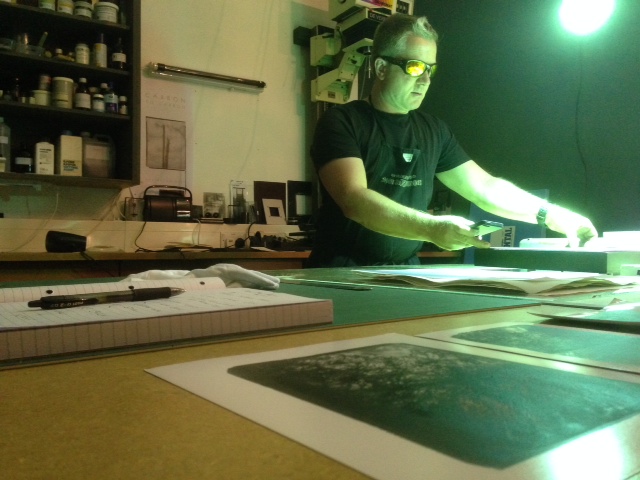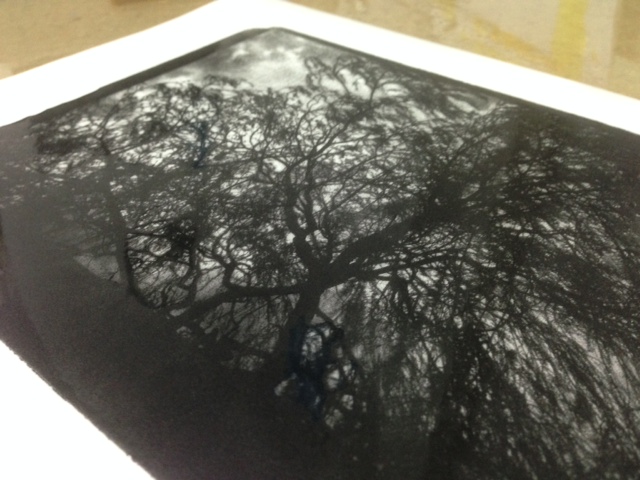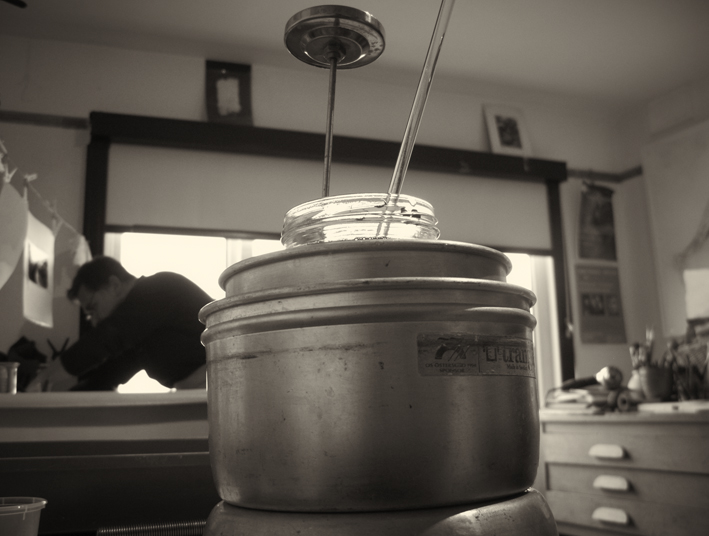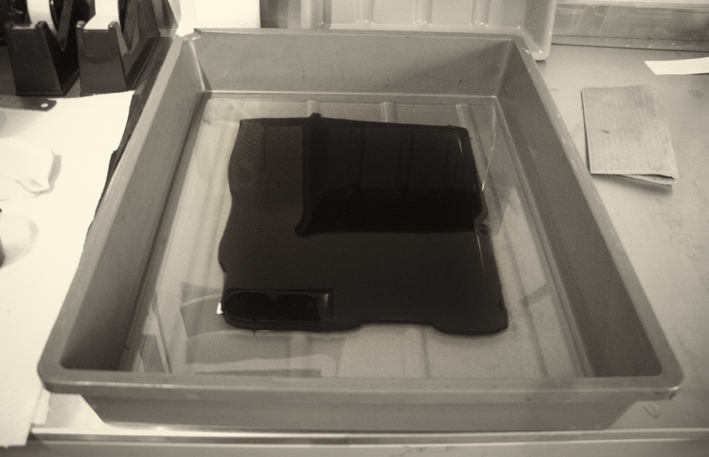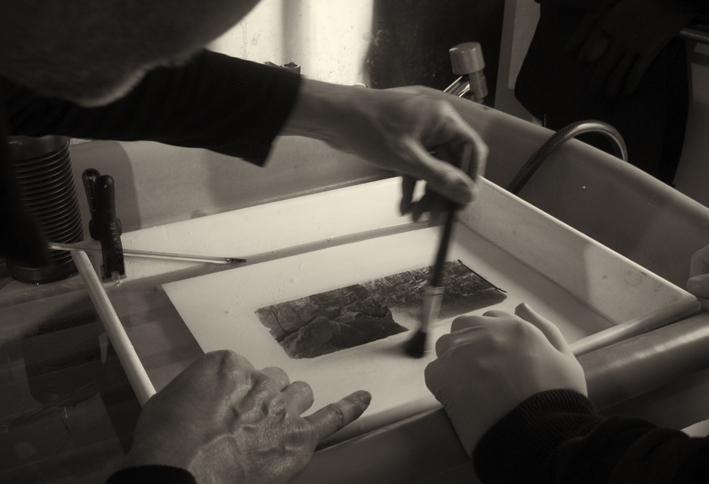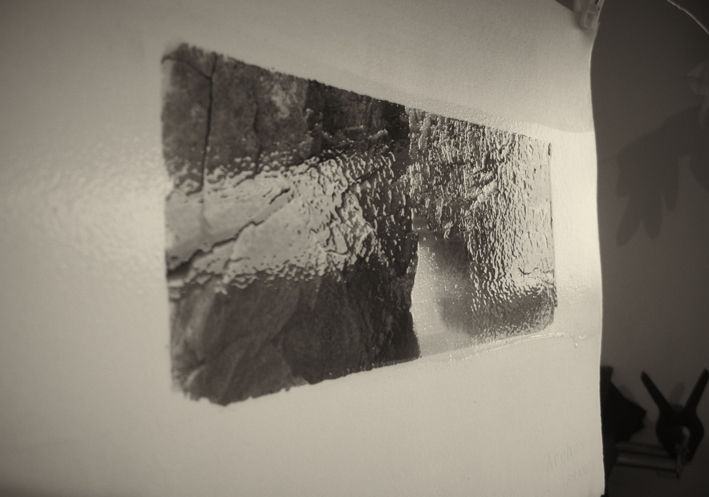I am now preparing small salt prints for my next public show at Woodend as part of the North Yorkshire Open Studios 2014 Moors & Coast exhibition.
Continuing with my experimentation with salt printing I have started working outside the darkroom and making solar exposures.Yet another step back in time to when the sun was used to make the very first photographic prints.

I made a few solar exposures about 25 years ago and had forgotten how refreshingly simple it was to make photographs using this technique. With any printing out process it is a real joy to see the image develop during the exposure, working outdoors with the sun enhances this experience .
Working in the summer months when the sun’s declination is high, direct exposure to the sun in blue sky (4 hours ether side of the sun’s transit) at latitude 54 degrees north gives me exposures that are 6 times faster than my mercury vapour lamp in the darkroom. In overcast cloudy conditions the exposures are about 2 times faster.
Using North Sea water (boiled and filtered) I prepared my salted paper with a 30 second salt bath. After letting it dry. The silver nitrate (10% concentration was brushed on with a 6% citric acid formula of 1:1 silver to citric.
I have not calculated the salt content of the North Sea water but it works well with my negatives so far. The first test prints have proved to be very promising and I will be making more seascape studies today.
This is one of my test prints, this is from a 8×10 HP5+ negative. Printed on Indian rag paper 640 gms.

You can view my work during the North Yorkshire Open Studios event along with the Moors and Coast exhibition at the gallery at Woodend, The Crescent, Scarborough, North Yorkshire, YO11 2PW
Gallery opening times: Monday – Friday 9am – 5pm.
I will also be in attendance during the NYOS weekends of Saturday & Sunday 7 & 8 June and 14 & 15 June from 10.30 – 5.30pm. I will be available to chat about my techniques and processes.



